Embracing the Artistry of the Philippine Archipelago
The Philippines is not only a country of breathtaking landscapes and vibrant traditions but also a treasure trove of artistic expression. With a rich cultural heritage infused with indigenous and colonial influences, the archipelago is home to an array of unique Filipino handicrafts that radiate creativity and craftsmanship. From the northern highlands to the southern shores, each region boasts its own signature crafts that reflect the Filipino spirit. Let’s dive into this world of handcrafted marvels and discover the pieces that make the heart of Philippine artistry beat with passion and pride!
1. Intricate Capiz Shell Decor

The shimmering splendor of Capiz shell decor is a sight to behold. Crafted from the translucent outer shell of the placuna placenta oyster, found in Philippine waters, these treasures bring the essence of the sea into your home. Whether it’s the ethereal glow of Capiz shell chandeliers casting light in a breezy foyer or the delicate charm of window panes that turn sunlight into rainbows, each piece is a testament to the Filipino artisans’ meticulous craftsmanship. Adorning your space with these nature-inspired creations is sure to sprinkle a bit of island magic in your daily life.
2. Banig (Woven Mats) Brilliance

Step lively into the world of Banig! These aren’t just mats; they’re tapestries of life, handwoven with grass, palm, or pandan leaves dyed in vibrant hues that tell tales of tradition and toil. These functional artworks, traditionally used for sleeping or sitting, now have beautiful patterns and evolve into wall art, bags, and other modern accessories. In the hands of Manila’s master weavers, each banig transforms into an intricate fusion of functionality and artistry that captivates with every thread.
3. Anito Wood Carvings

Feel the spirit of ancient Filipino folklore with Anito wood carvings. These figures, carved with reverence from Philippine hardwood, represent deities and spirits worshipped by indigenous Filipinos. Each statue is a glimpse into a mystical past, their expressions frozen in wood, capturing the essence of Filipino mysticism. An authentic piece from Manila’s master carvers serves as both home decor and a nod to the nation’s rich spiritual history.
4. Barong Tagalog Elegance
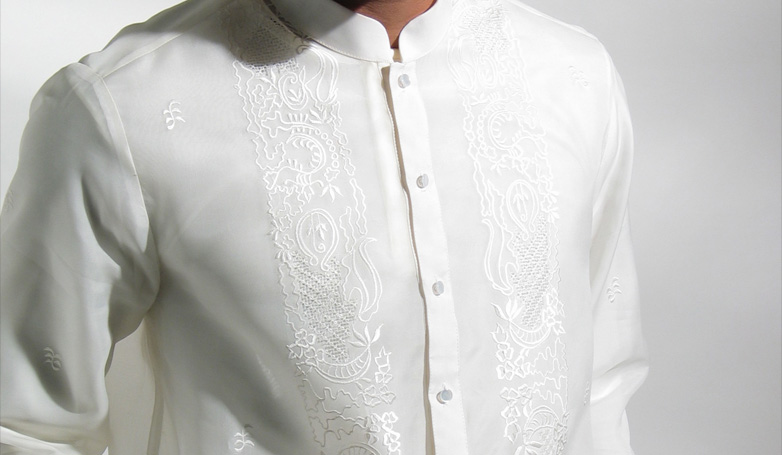
Marvel at the national pride woven into every thread of the Barong Tagalog. This traditional, lightweight shirt is more than just attire; it’s a symbol of Filipino identity. Made from pineapple fiber (Piña) or banana silk (Jusi), its sheer elegance is heightened by delicate, hand-embroidered patterns. Bringing one back from Manila means carrying a piece of national history that can be worn for generations.
5. Abaca Baskets and Bags
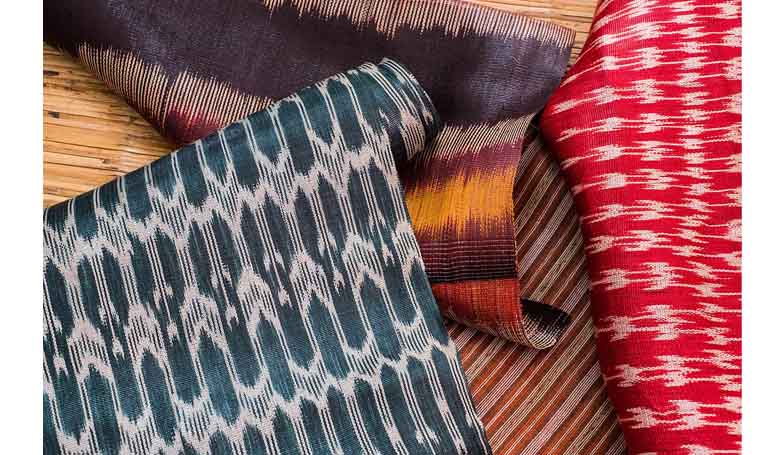
Discover the versatile strength of abaca, a natural fiber from the Philippine banana plant. The artisans in Manila twist and turn these fibers into beautifully woven baskets and bags. In a dance of durability and design, each item showcases the perfect marriage of tradition and contemporary fashion. Sturdy yet stylish, these Abaca treasures are eco-friendly fashion statements with a purpose.
6. Taka (Papier-Mâché) Figurines
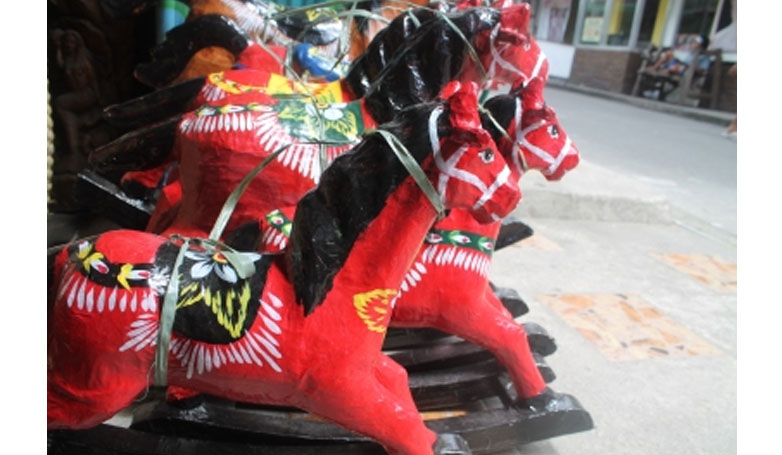
Bask in the playful charm of Taka figurines. Originating from Paete, a town known for exceptional woodwork, artisans turned to papier-mâché to craft affordable, cheerful creations. These hand-painted statues of animals, folk characters, and festive symbols embody the Filipino flair for joyful expression. Each piece adds a burst of color and whimsy, perfect for brightening up any corner of your home.
7. Philippine Pearls and Jewelry
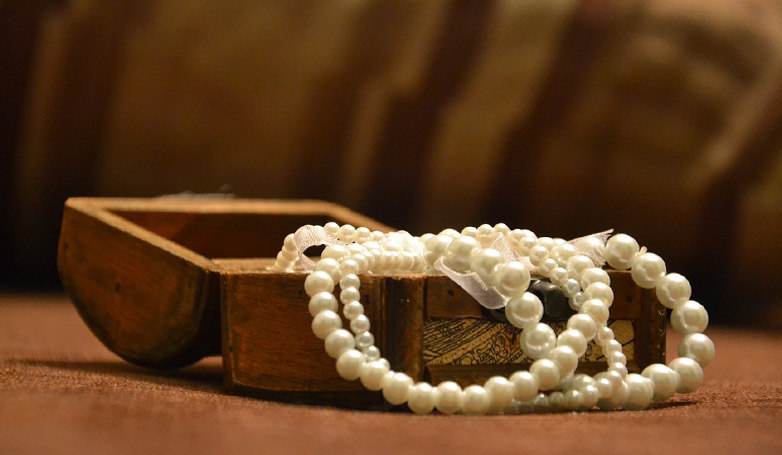
Adorn yourself with the luster of Philippine pearls. Sourced from the bountiful seas surrounding the archipelago, these gems reflect elegance and sophistication. Whether setting in meticulously crafted jewelry or strung into minimalist necklaces, these pearls capture the serene beauty of the Philippine islands. Acquiring pearl jewelry in Manila means owning a strand of the country’s aquatic treasures.
8. Butterfly Knife (Balisong) Craftsmanship
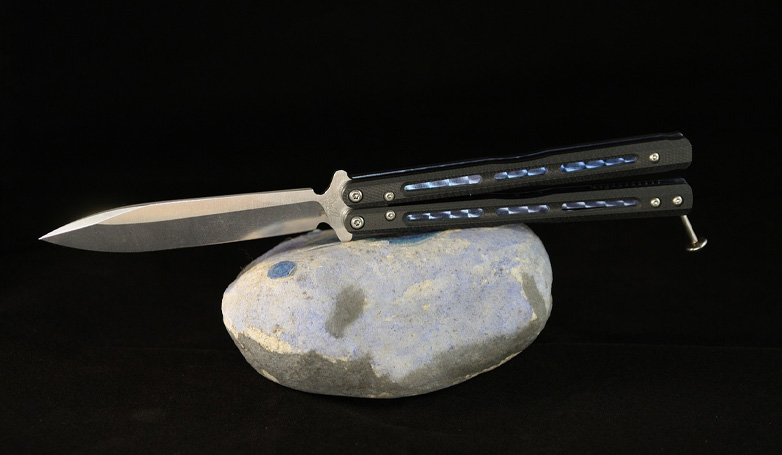
Experience the edge of Filipino craftsmanship with the Balisong, also known as the Butterfly Knife. This foldable blade from Batangas is as much a weapon as it is an art form; with skilled hands, it’s flipped and twirled in an intricate dance. While it’s more of a collector’s item and not recommended for casual travel souvenirs due to varied laws, its craftsmanship is still admired by many.
9. Hand-Loomed Textiles Pride
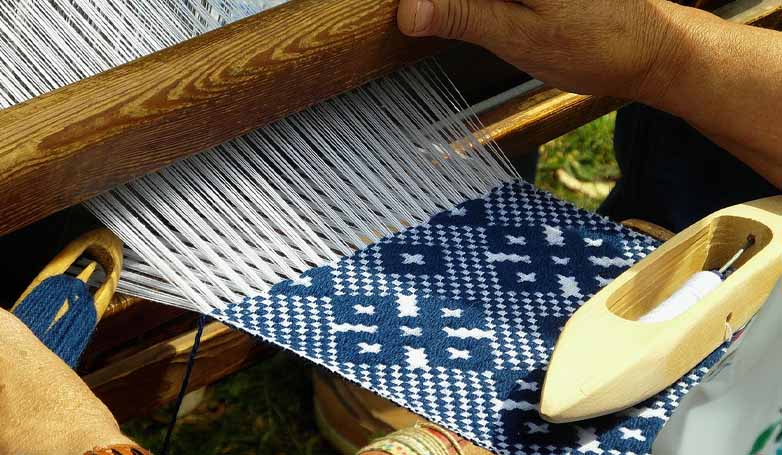
Wrap yourself in the rich textures of hand-loomed textiles like Inabel from northern Luzon and Mindanao’s T’nalak. These fabrics are not just materials but narrations of ancient practices preserved by the rhythmic clacking of wooden looms. Woven by diligent hands, the fabrics hold patterns that are emblematic of the cultural diversity of the Philippines, making them perfect for fashion pieces or home furnishings.
Conclusion: A Celebration of Filipino Craftsmanship and Culture
As our journey through the diverse world of Filipino handicrafts comes to a close, we are reminded of the Philippines’ rich, woven tapestry of art and expression. Each handicraft is a precious thread in the fabric of Filipino identity, carrying stories of the past and aspirations for the future. From the dream-laden T’nalak to the iridescent Capiz shells, these crafts are a testament to the indomitable spirit and unparalleled artistry of the Filipino people. Cherishing these treasures promotes cultural preservation and provides livelihoods for communities, allowing the enchanting pulse of Philippine creativity to thrive for generations. The Philippines is also rich in undiscovered islands. Check here.
Filipino Handicrafts FAQ
Here are the most common questions about Filipino handicrafts.
1. Are there any workshops or tours available to learn about Filipino handicrafts?
Yes, workshops and cultural tours are available for those interested in learning more about Filipino handicrafts. These experiences can include hands-on workshops where participants learn weaving, carving, pottery making, or other craft techniques under the guidance of local artisans. Cultural tours often visit artisan communities, providing a deeper understanding of the cultural context of the handicrafts and an opportunity to see artisans at work.
2. What should I do to ensure I’m buying authentic Filipino handicrafts?
To ensure authenticity, buy from reputable sources or directly from the artisans themselves. Look for certification labels that indicate the item is a genuine Filipino handicraft. In some cases, government organizations or local cultural associations certify the authenticity of these products. Also, research or inquire about the crafting process, materials used, and the background of the artisans involved.
3. Are Filipino handicrafts expensive?
The price of Filipino handicrafts can vary greatly depending on the complexity of the work, the materials used, the time invested, and the skill of the artisan. Some finely crafted pieces, especially those that require a significant amount of time and skill, can be more expensive. However, there are also many affordable handicrafts available. When purchasing, it’s critical to consider the craftsmanship and support ethical pricing that fairly compensates the artisans for their labor and talent.
4. What should I consider when buying Filipino handicrafts?
When buying Filipino handicrafts, consider the authenticity, quality, and origin of the items. It’s essential to ensure that what you’re purchasing is genuinely handcrafted by local artisans. Supporting fair trade practices and purchasing directly from artisan communities can contribute to sustaining the livelihoods of the craftsmen and the preservation of their cultural heritage.
5. Can I customize Filipino handicrafts?
Many Filipino artisans are open to custom orders, allowing buyers to request specific designs, colors, or sizes. This is more common for items like textiles, personalized jewelry, and furniture. However, customization options will depend on the artisan’s skill level and the nature of the craft.












